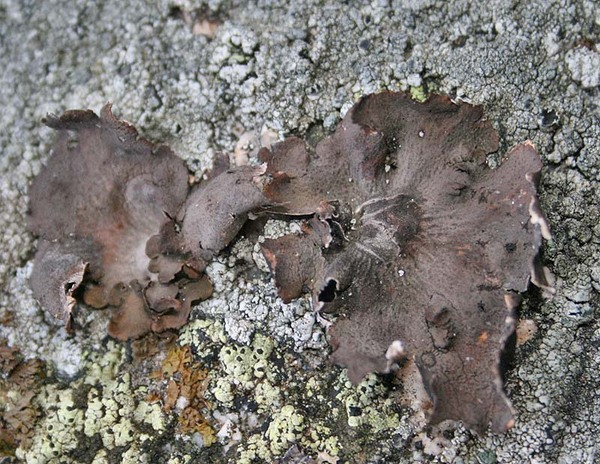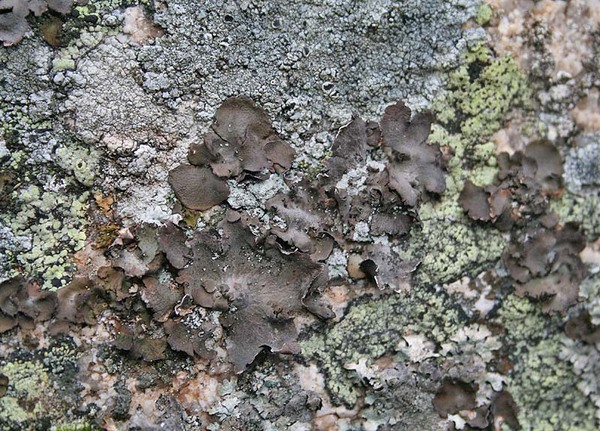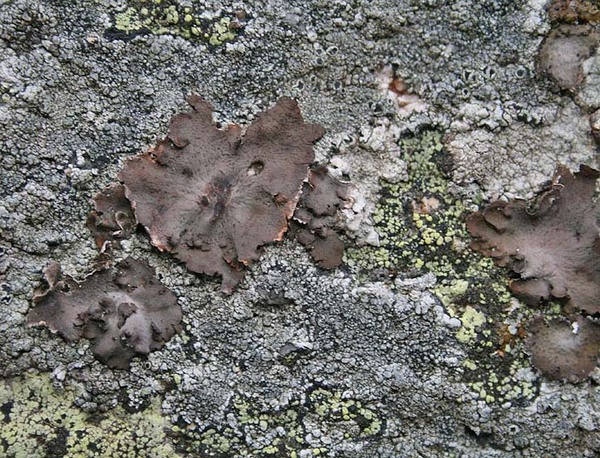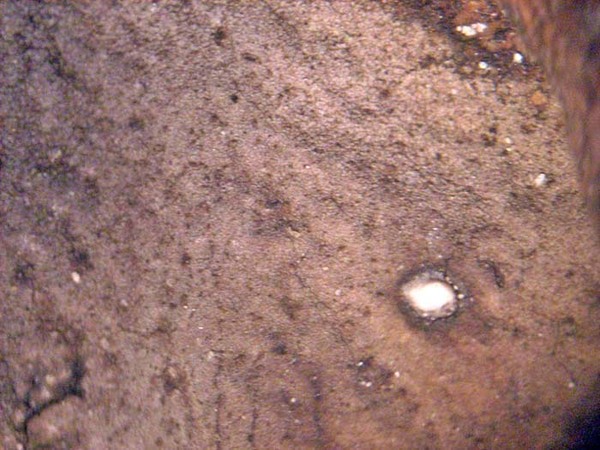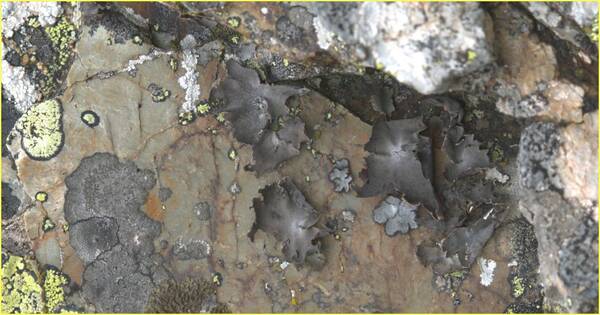Umbilicaria subpolyphylla Oxner
Flora Lischaĭnikiv Ukraïni, 2, 1: 497, 1968
Synonyms: Umbilicaria iberica Sancho & Krzew.
Distribution: S - Si (Christensen 2022).
Description: Thallus foliose-umbilicate, heteromerous, dorsiventral, monophyllous, up to 3(-5) cm wide attached by a central holdfast, the margins revolute, entire or somewhat lacerate. Upper surface dull, smooth to weakly wrinkled, grey-brown to dark brown, subumbonate in central part, slightly radially wrinkled, white areolate-scabrid and pruinose. Lower surface sooty black, sometimes with a paler marginal zone, or white-mottled, smooth, without rhizinomorphs, completely or patchily covered in dark brown, 3-5(-8)-celled, spherical to ellipsoid thalloconidia measuring (11.5-)13-21(-31) x (8.5)12-17(-24.5) μm. Upper cortex palisade-plectenchymatous; medulla white, one-layered, the plectenchyma scarcely branched, the hyphae loose, with many open intercellular spaces. Apothecia rather rare, sparse, black, sessile to substipitate, 0.7-1.5 mm across, actinodisc. Epithecium dark brown, up to 15 µm high; hymenium colourless, up to 75 µm high; paraphyses usually simple, up to 2.5 µm thick; hypothecium dark. Asci 8-spored, clavate, thick-walled, with an amyloid apical dome, Umbilicaria-type. Ascospores 1-celled, hyaline, ellipsoid, 11-13 x 6-7.5 µm. Pycnidia occasional to frequent, dark brown to black, 0.1-0.2 mm in diam. Conidia bacilliform, 3.5-5 x c. 1 µm. Photobiont chlorococcoid. Spot tests: medulla K-, C+ red, KC- or KC+ red, P-. Chemistry: medulla with gyrophoric and umbilicaric acids (major), and lecanoric acid (minor).Note: a southern European species ranging from the Iberian Peninsula to Crimea, growing on siliceous rocks in sunny to rather shaded situations, from the montane to the oromediterranean belt. Some South Italian records of U. polyphylla may belong to this species (see Christensen 2022).
Growth form: Foliose, umbilicate
Substrata: rocks
Photobiont: green algae other than Trentepohlia
Reproductive strategy: mainly asexual, by conidia and thalloconidia
Commonnes-rarity: (info)
Alpine belt: absent
Subalpine belt: absent
Oromediterranean belt: very rare
Montane belt: very rare
Submediterranean belt: absent
Padanian area: absent
Humid submediterranean belt: absent
Humid mediterranean belt: absent
Dry mediterranean belt: absent
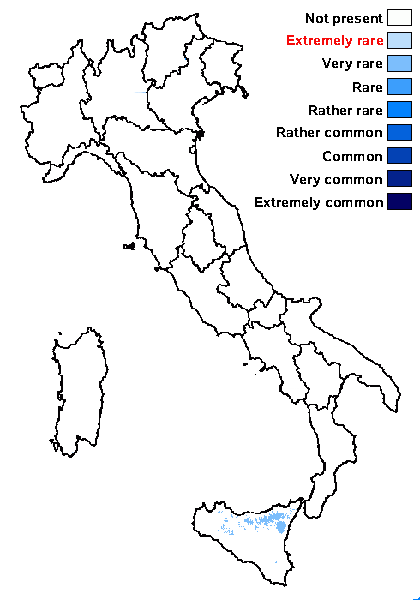
Predictive model
Growth form: Foliose, umbilicate
Substrata: rocks
Photobiont: green algae other than Trentepohlia
Reproductive strategy: mainly asexual, by conidia and thalloconidia
Commonnes-rarity: (info)
Alpine belt: absent
Subalpine belt: absent
Oromediterranean belt: very rare
Montane belt: very rare
Submediterranean belt: absent
Padanian area: absent
Humid submediterranean belt: absent
Humid mediterranean belt: absent
Dry mediterranean belt: absent

Predictive model
 INDEX FUNGORUM
INDEX FUNGORUM
 GBIF
GBIF
